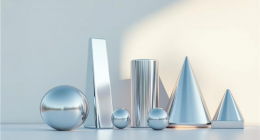Fortune 100 response to DE&I pressures

How CIOs must proactively champion the use of AI

The rapid acceleration of Artificial Intelligence (AI) adoption is reshaping the technological landscape faster than we could have ever anticipated. AI’s market size estimated growth rate between 2023 and 2030 will be about 37%, with over 60% of business owners believing it will increase productivity, potentially creating over 90 million jobs worldwide.
This surge announces a transformative era but also highlights a critical challenge. Many organizations find themselves at a crossroads, with CIOs grappling to familiarize themselves with AI's complexities amidst skyrocketing demands and expectations from the whole organization. This gap between innovation and capacity has birthed a phenomenon known as 'Shadow AI’, where business leaders, driven by the urge to forge ahead, bypass IT protocols to deploy AI solutions independently.
This momentum highlights the tension between rapid technological adoption and organizational readiness, causing significant risks and inefficiencies. As CIOs navigate this uncharted territory, the need for a strategic approach to embrace AI while safeguarding the organization’s digital backbone has never been more crucial.
The rapid expansion of AI applications within organizations is propelled by technological advancements and a growing acknowledgment of AI's transformative potential across various industries. By 2026, it is projected that 80% of enterprises will have embraced Generative AI in some capacity, through the deployment of GenAI applications or the utilization of GenAI APIs.
AI's vast applications—from enhancing customer experiences and boosting operational efficiency to enabling data-driven decision-making - continue to drive its integration into diverse aspects of organizational workflows and strategies, more swiftly and comprehensively than ever before. However, this fast growth of AI comes with a set of risks, many of which are either caused or amplified by Shadow AI situations.
Shadow AI refers to the implementation or use of AI-based solutions without the appropriate involvement or oversight of the IT department.
Essentially, a Shadow AI situation arises when an individual, team, or department uses a tool that utilizes AI or machine learning to improve their productivity or working conditions, yet does so without notifying or involving the IT department.
Shadow AI closely mirrors Shadow IT in several aspects, including its origins, impacts, and strategies for addressing it. Consequently, IT leaders are well-positioned to apply their insights and experiences gained from managing Shadow IT towards effectively navigating the challenges of Shadow AI.
To leverage lessons learned from Shadow IT successfully, it is important to understand the concepts behind AI and the associated risks. CIOs must be correctly informed and remain up to date on the topic and its latest evolutions.

Shadow AI, though often initiated with good intentions, can lead to significant challenges within organizations, broadly falling into two categories: security and compliance, and organizational efficiency.
Data security can be compromised by Shadow AI from a system level and an end-user level, causing data breaches, exposure of confidential information, or unauthorized access to sensitive data.

A department within an organization decides to implement a machine learning model for customer segmentation without involving the IT department. They collect customer data from various sources and store it in a cloud-based database without proper encryption or access controls. Due to the lack of IT oversight, the database becomes vulnerable to unauthorized access and data breaches.

An employee downloads a third-party AI application on his professional computer to streamline document organization and analysis. However, the application requires access to the user's email account and other sensitive data. Without realizing the security implications, the employee grants the application access, inadvertently exposing confidential business communications and personal information.
Shadow AI can also lead to duplication of efforts, waste of resources, and an increase in incurred costs.

In a large corporation, the marketing department, and the sales department both independently develop machine learning models to predict customer purchasing behavior. Each department collects its own dataset, hires data scientists, and invests in computing resources to train the models. However, due to the lack of communication and coordination, neither team is aware of the other's efforts.

A team of developers utilizes a cloud-based AI service to train machine learning models for a new product feature. Without proper oversight, the developers leave the training process running unchecked, resulting in excessive CPU time usage and budget overruns.
CIOs need to lead the parade when it comes to AI-based projects. They should be perceived as AI evangelists by the rest of their organization.
To mitigate the risks related to Shadow AI, CIOs should:
Communication and change management will be key allies in the quest against Shadow AI. Ensuring that the CIO is well-trained and informed on the topic is crucial for success.
In today’s world where AI adoption is growing at an unprecedented pace, IT leaders must create a proactive and supportive environment for AI while becoming the AI champion for their organization. By doing so, the risks caused by Shadow AI will be drastically reduced, and the organization will avoid financial and reputational pitfalls. While over-controlling might seem like an easy path, an educational and supportive approach will be more productive in the long term, unlocking countless opportunities for the organization.